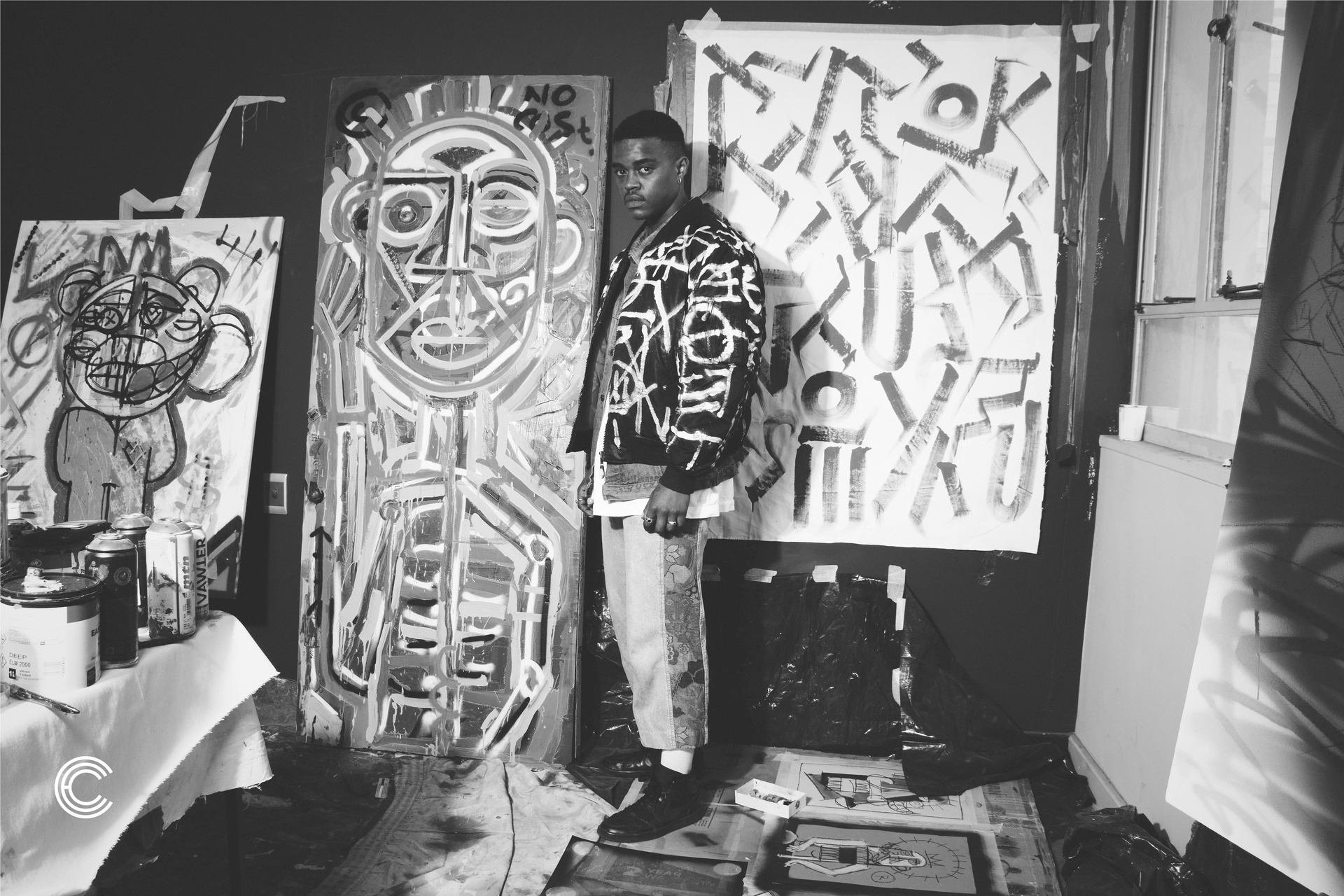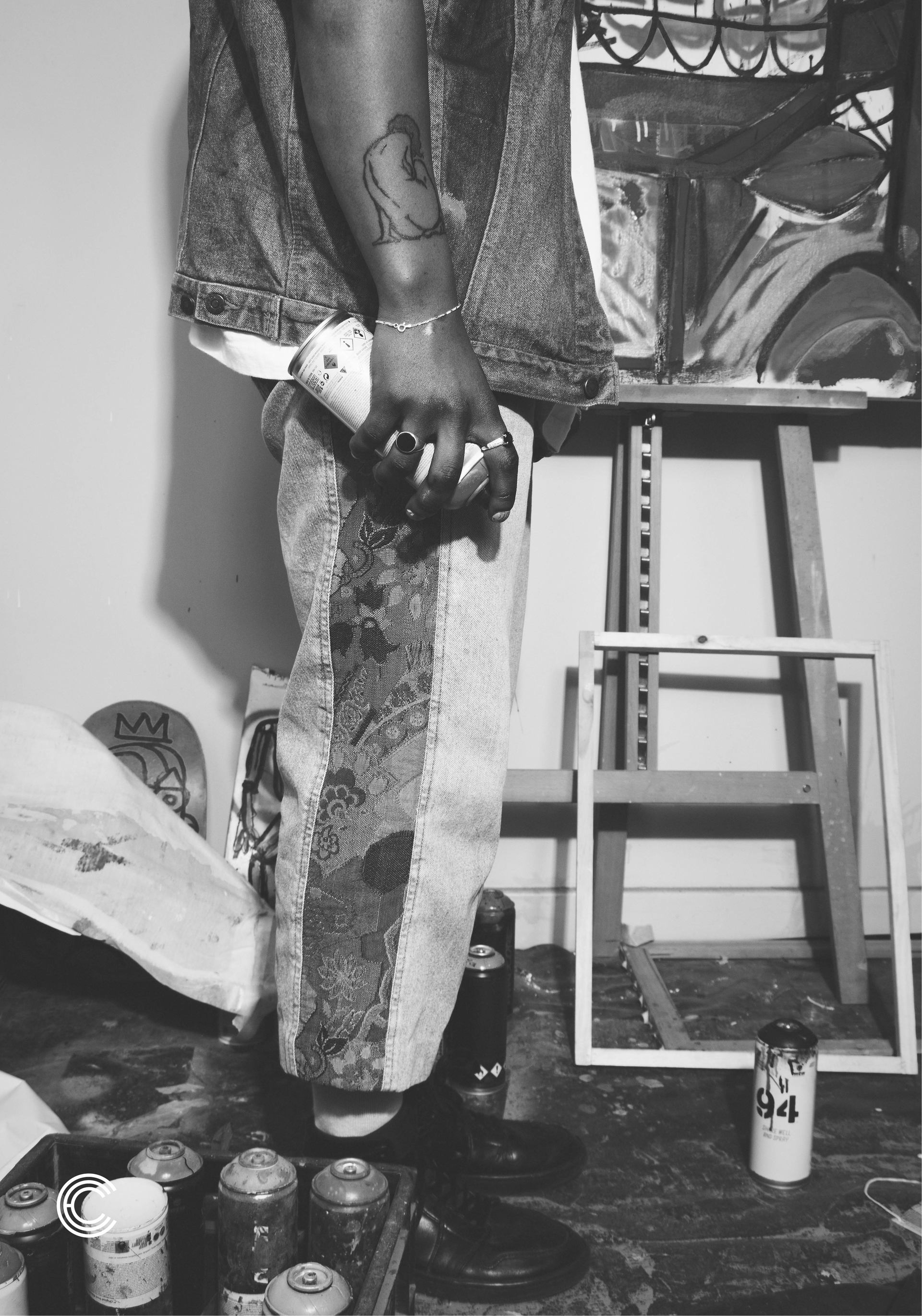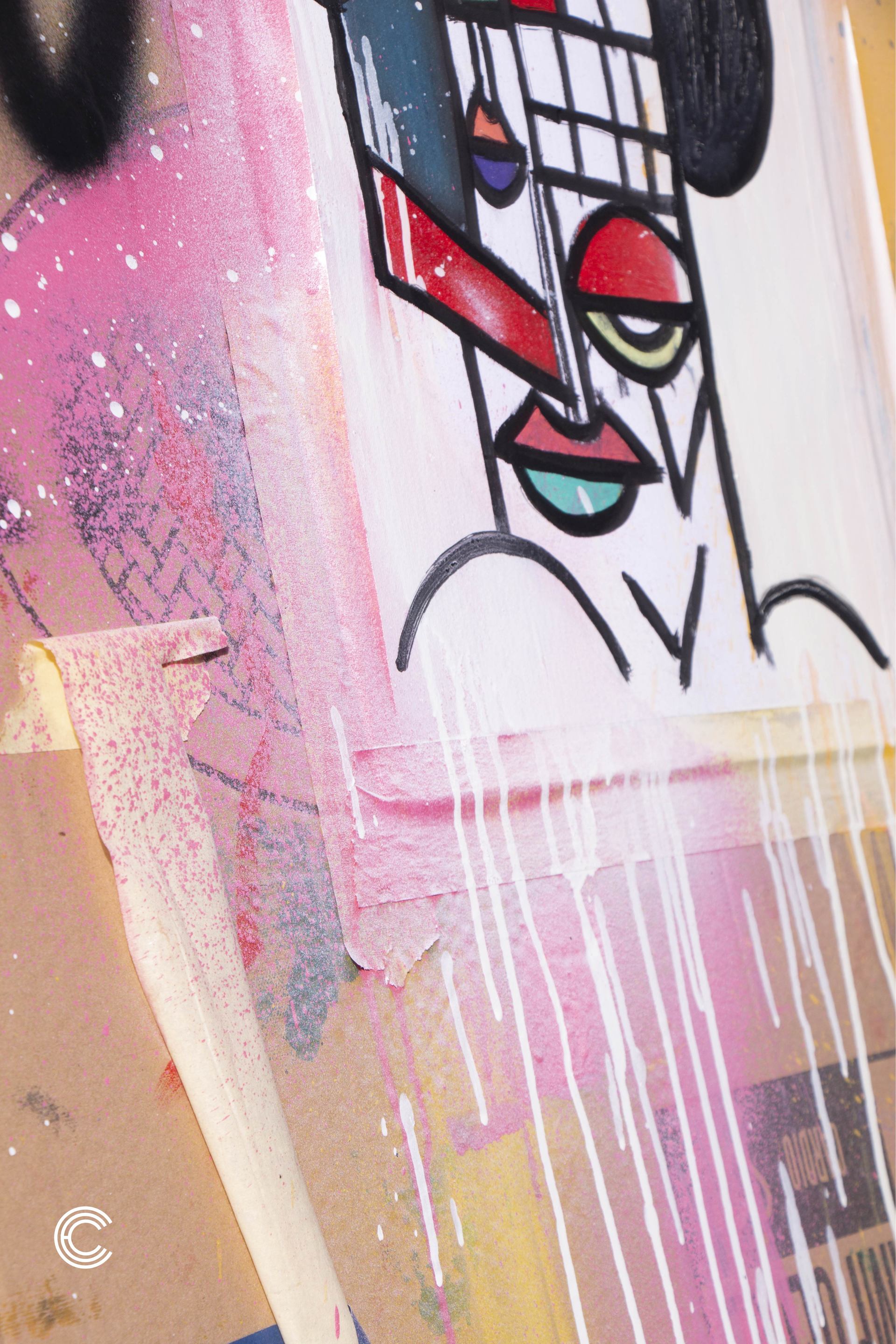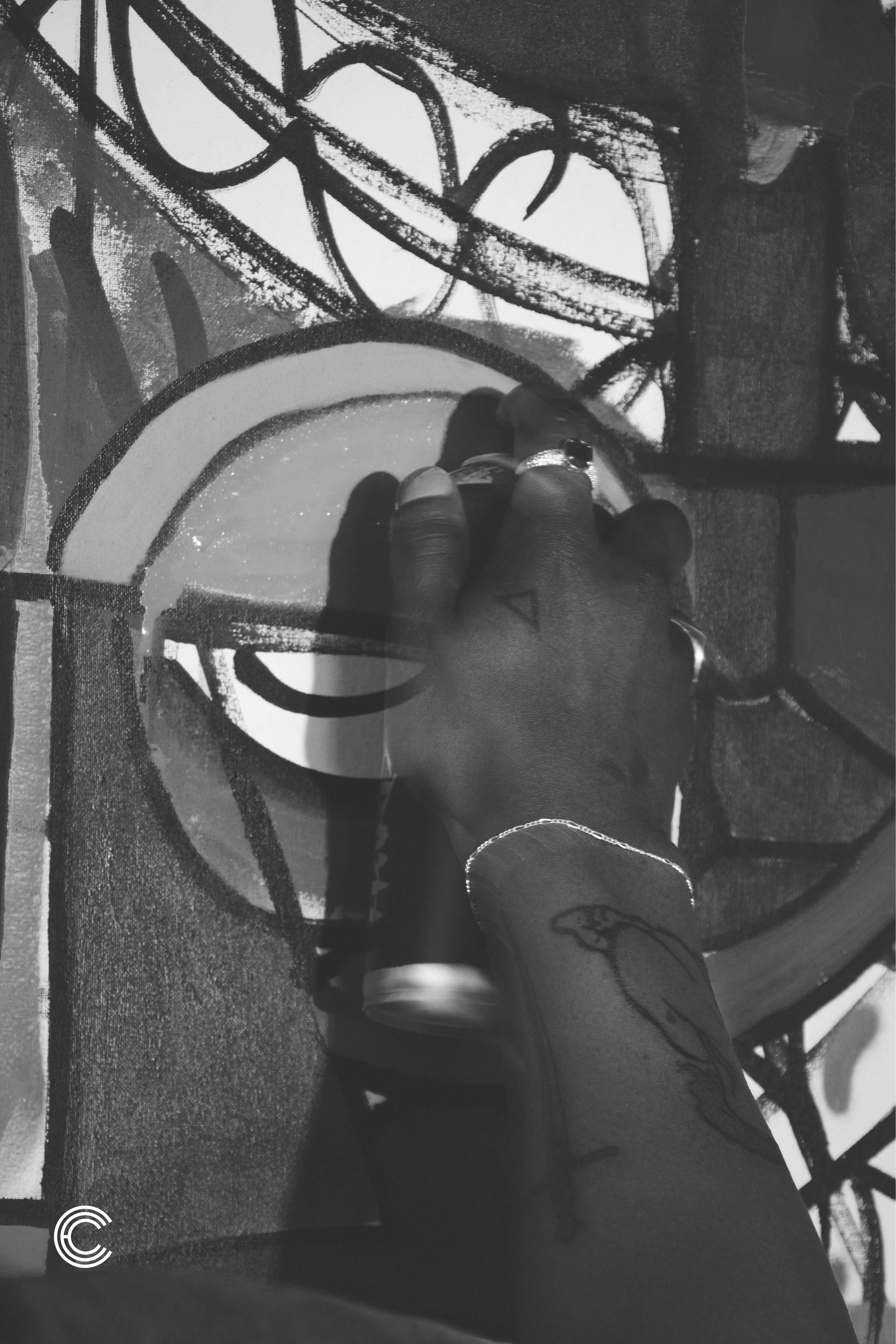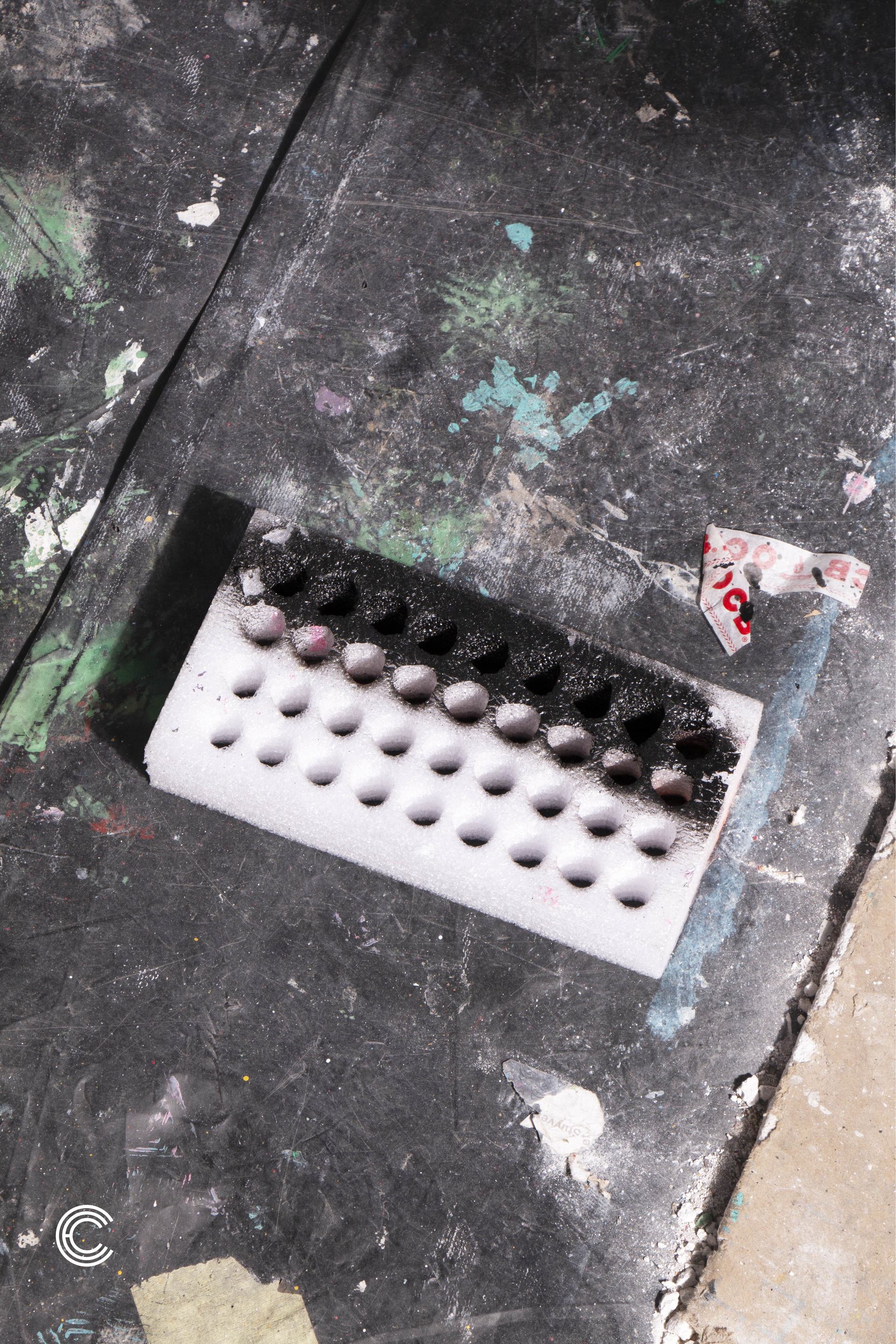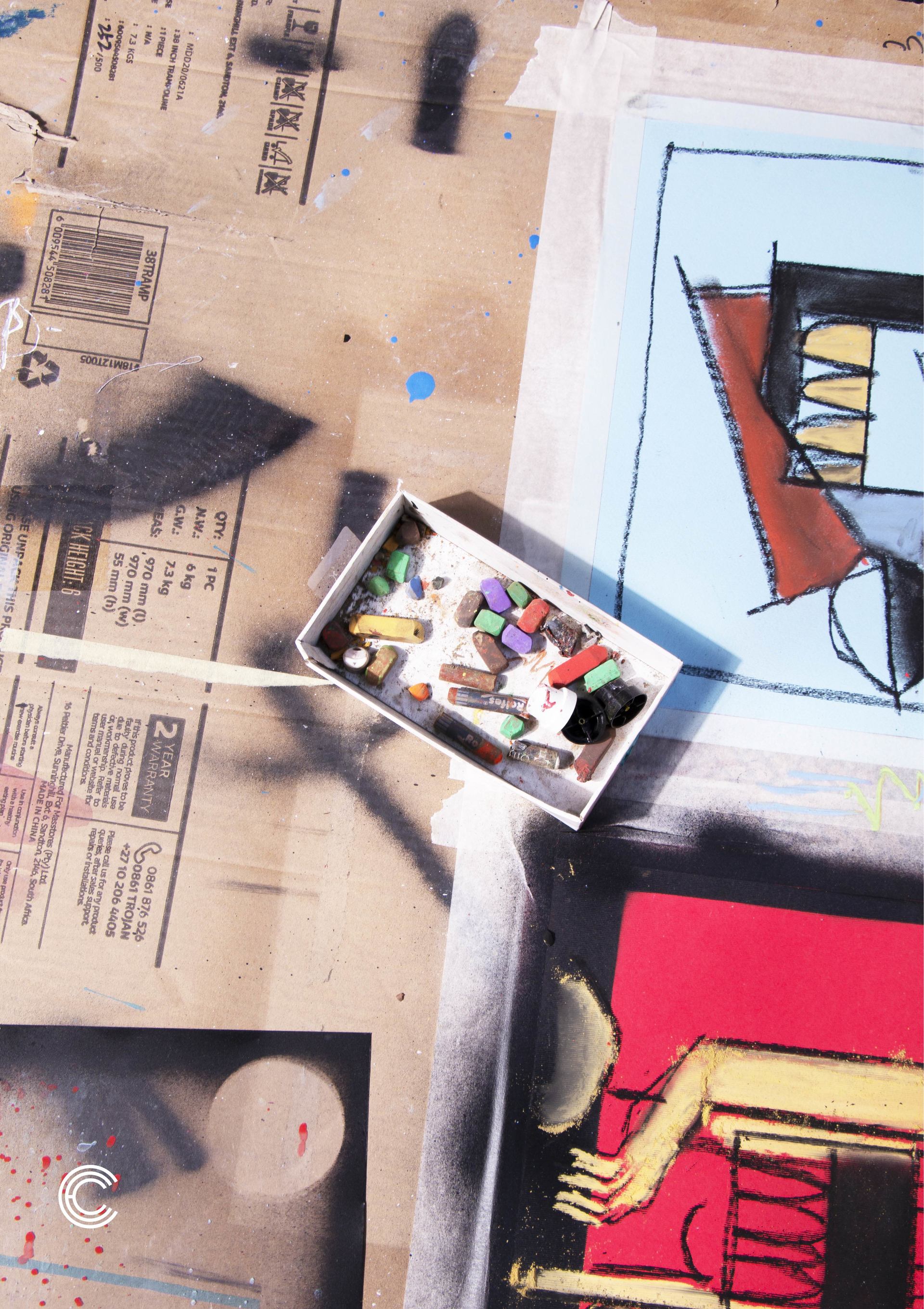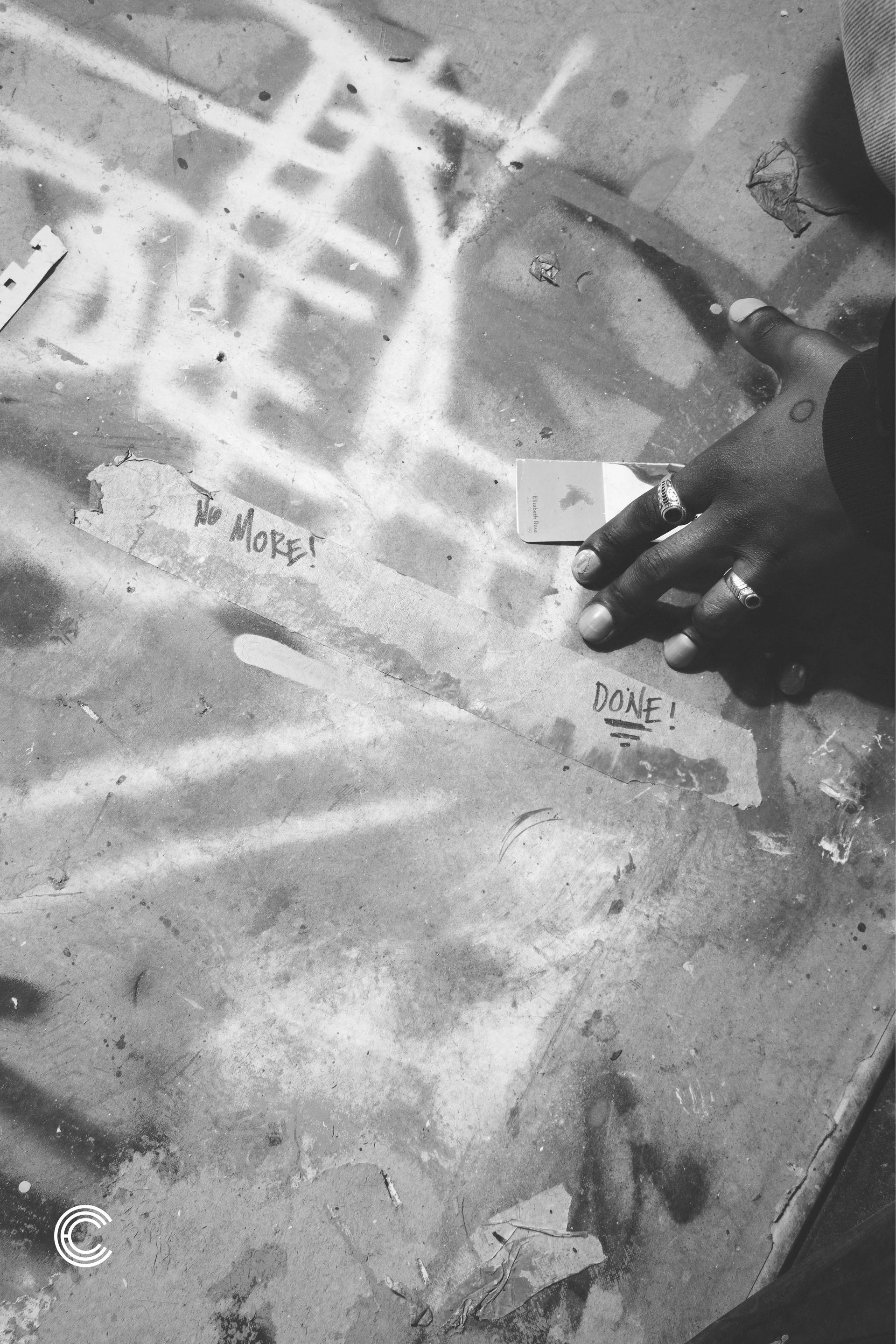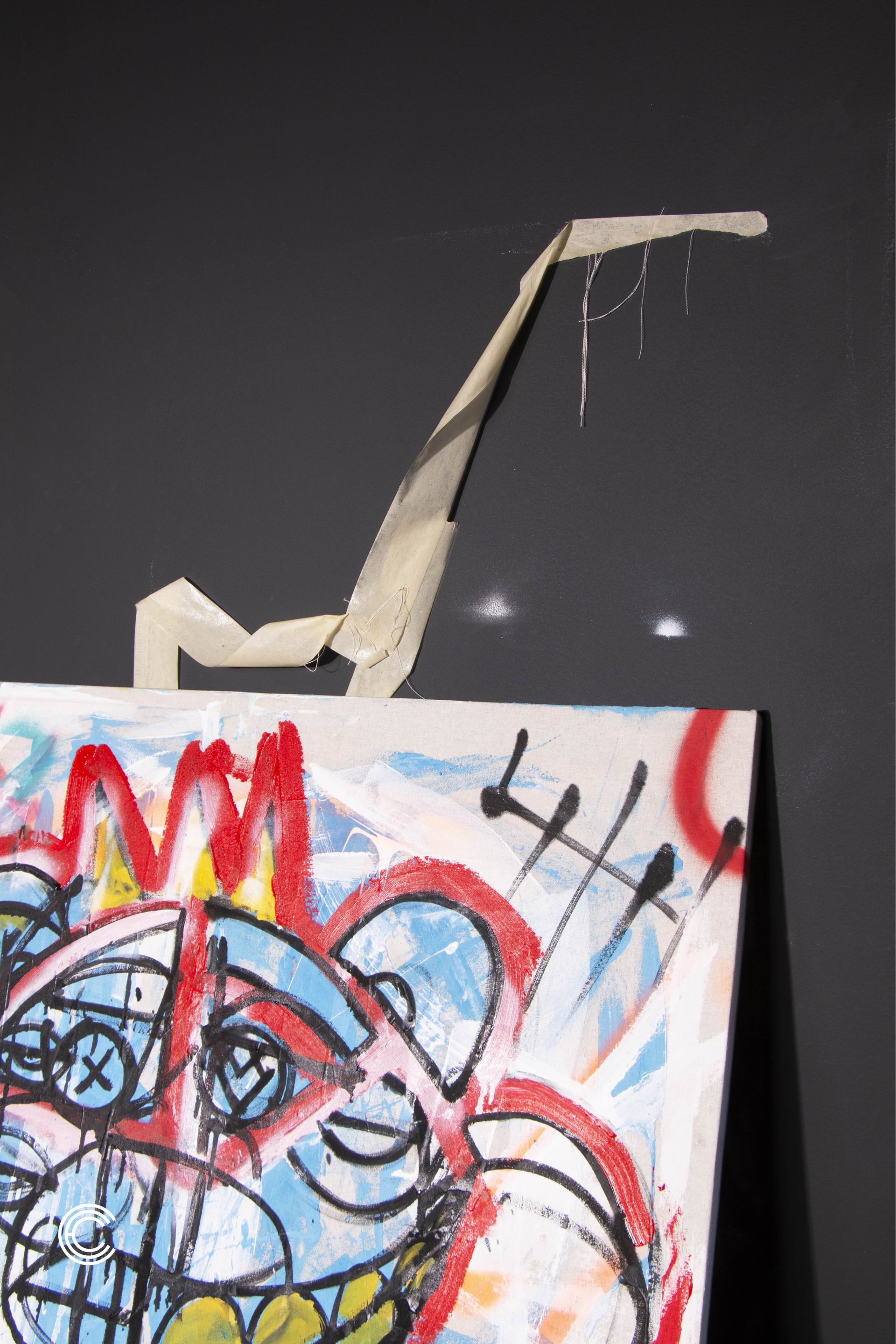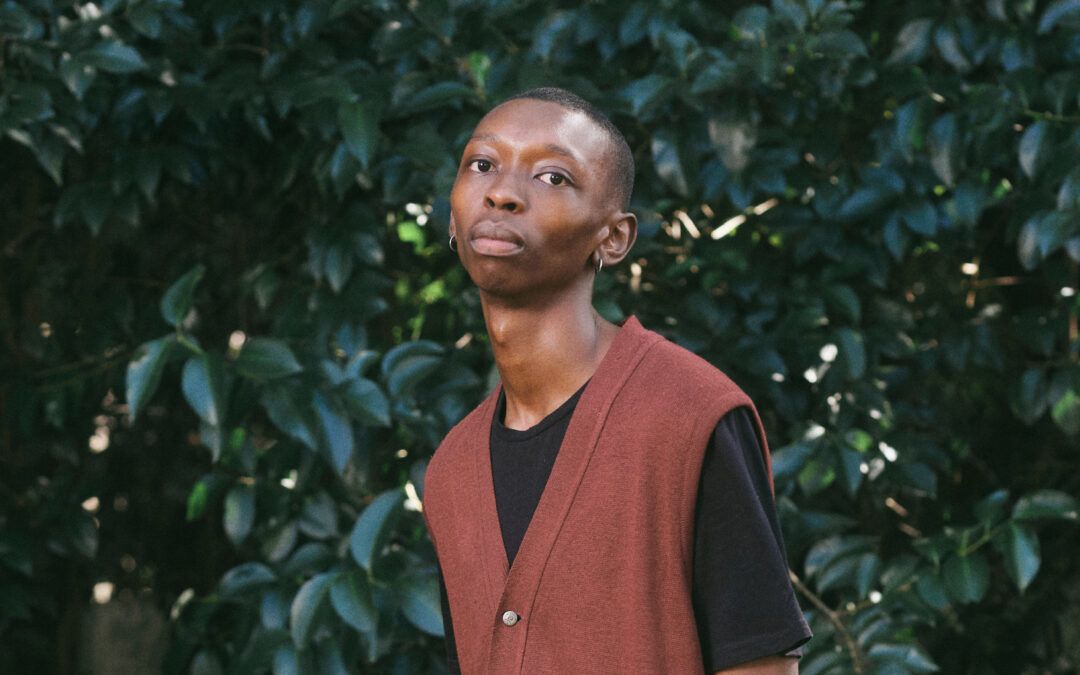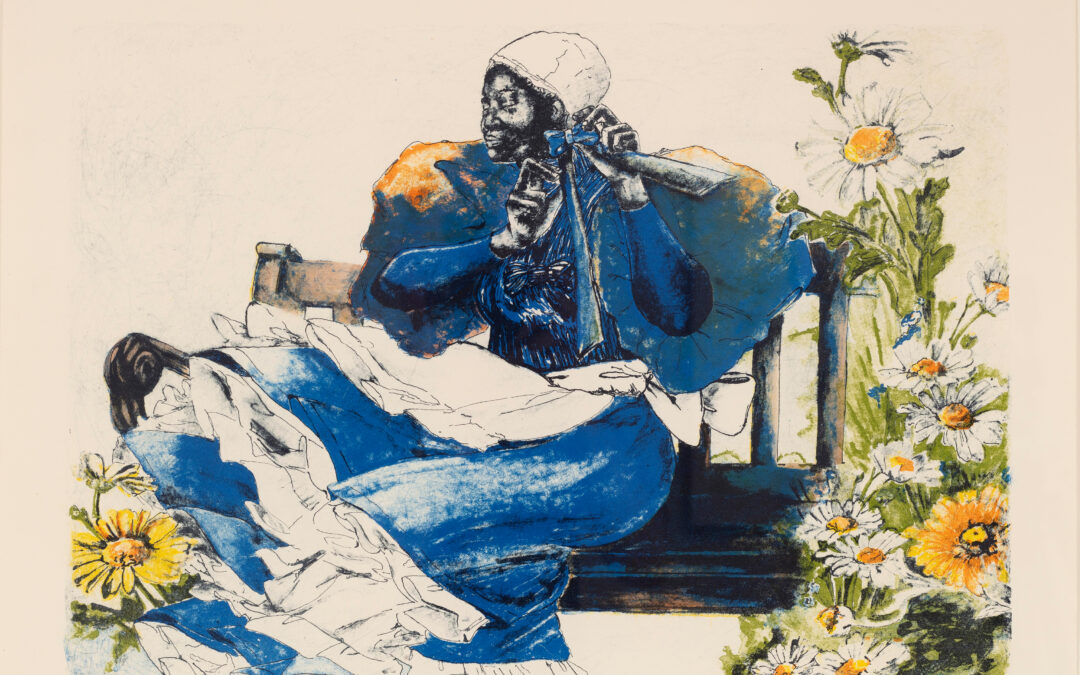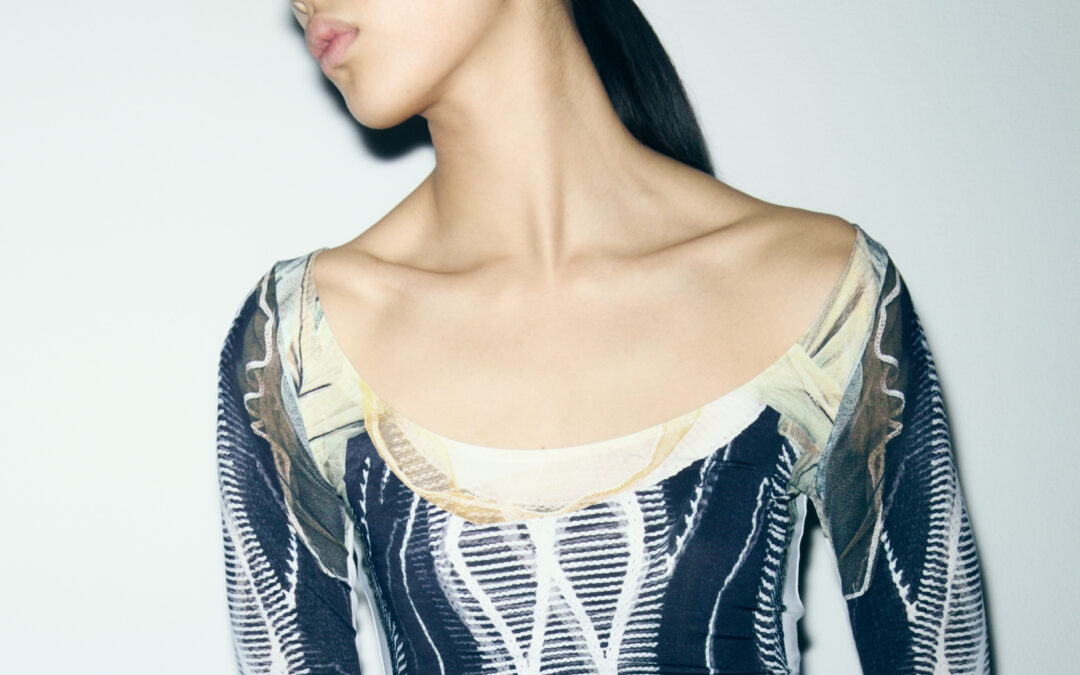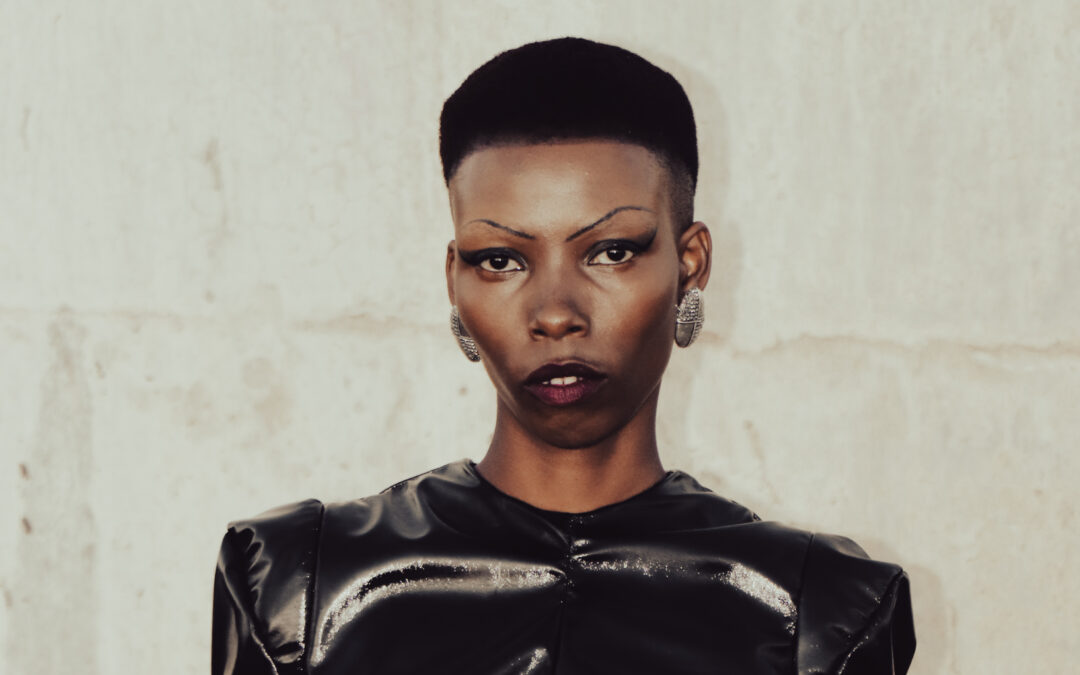Formidable is perhaps too rigid a word to associate with Farai – but somehow, it fits the mood of the moment – as we begin a conversation surrounded by some of his works at Black Brick Club. Farai is currently the artist in residence as well as the overall creative director of this bar / gallery / community space expertly positioned in Cape Town’s CBD, and to say I am anticipating this conversation is an understatement. I first came across Farai’s work at his Michaelis Graduate Show a few years ago – struck by the indecipherable yet gripping hieroglyphic symbology of his graduation collection, offset against clear Perspex. Already then, with no context to reference these pieces, these works exuded an energetic aura that was intriguing and evocative. I later came to learn of Farai by his Instagram moniker – Samurai Farai – and I wondered what sort of universal alchemy took place in order for his name to phonetically tie to the legendary warrior class and discipline originating from Japan. That doesn’t just happen, right? What deepens this simple yet mysterious rhythm arises when getting to know Farai; because it is abundantly and crystal-clear that Farai commands a presence akin to a persona that I have only ever experienced from anime or manga novels; namely, the embodiment of a main character whose existence is an activated journey that is guided by unknown, powerful forces across quantum realities.
You will have to meet Farai to get what I am saying, but I hope this conversation offers an inkling of what I mean.
“I have carried this style with me until now, and I especially draw on it when I do my mural work; where the symbols can be scaled beautifully into bigger and bolder sizes.”

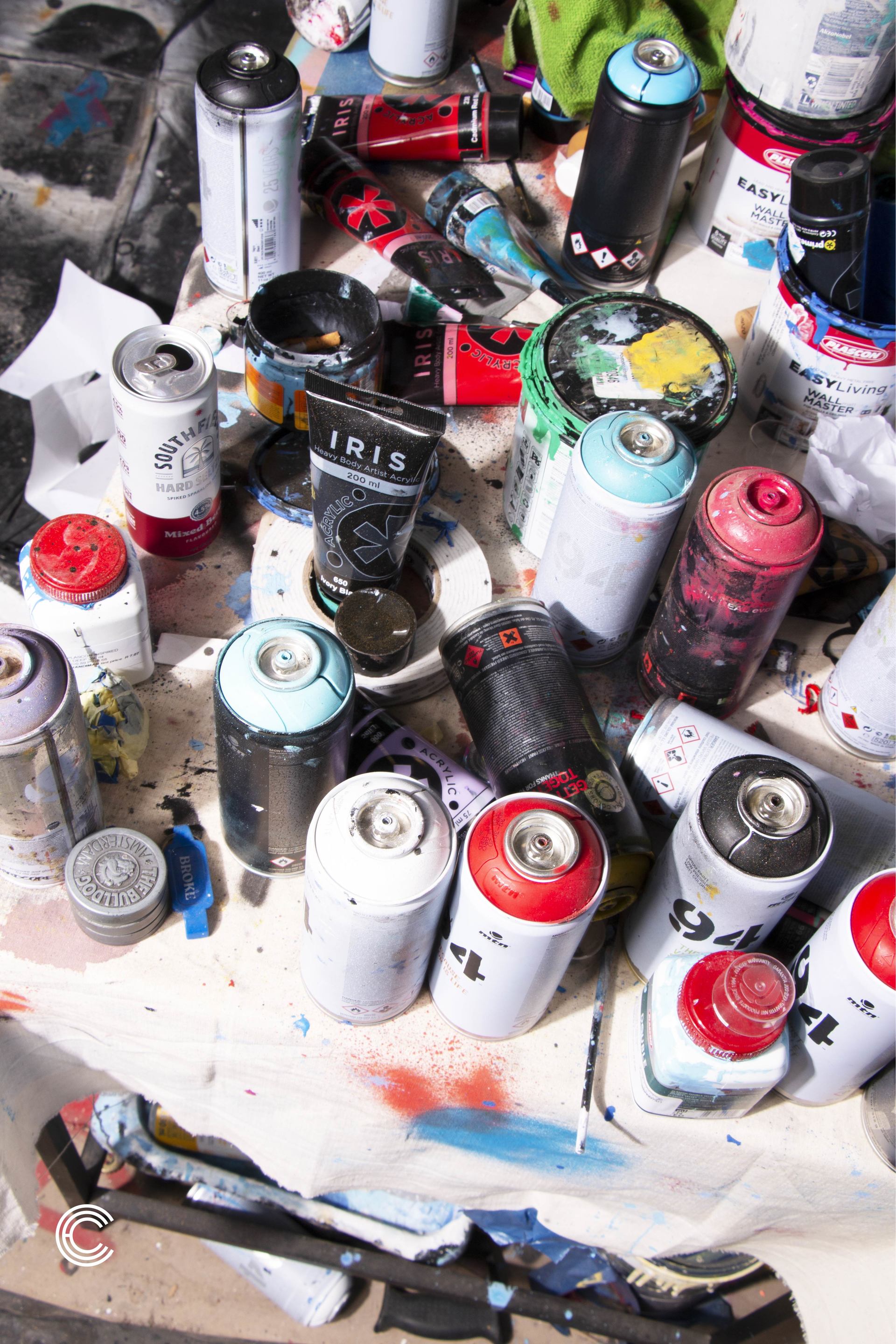
In so much of the post-modern art movement, there appears to be a nostalgia for the final outcome of the practice; that the object, sculpture or painting (as well as all the digital mediums) is what comes to define the artist, and is the most important aspect of the artist’s lifelong pursuit of their creative expression. Yet, contrary to this, is the idea that what brings the work to life is the union of artist and artwork; meaning, the coherency and transparency that is forged when the artist makes unto themselves the immutable persona that resides over their expression. This is what Farai embodies with such distinctive energy; that yes, he is an artist, but furthermore, he compounds his very existence into a canvas onto which he illustrates his ever-evolving, ever-expressing Self. You will notice this immediately from his IG feed – there is an equal part curated and created essence – weaved together by crimson red (his self-confessed favourite colour) tones and symbology. From the way Farai dresses, to his work and life experiences, I realise I am witnessing someone who lives intimately and inseparably with the finest details of what it means to grasp, with full force, one’s incarnation and forge a mark that will have lasting impact.
Curiously, I ask Farai about the symbology that began at his art school days;
“I basically decided in my last year at Michaelis that conceptually, I was really needing to challenge how people consume information and how archive knowledge, and how we communicate beyond English and iconography. I wanted to consider symbols as a language that is of itself, so what I did was that I created my own alphabet. I created a calligraphic system of which I could be the authoritarian of; and take power back as an artist, using my writing system to convey what I felt the English language couldn’t do. Only I understood the language, so this added a deeper layer of self-determining whether I would give people access to what I was saying. I really loved the fact that even though it is coded, the symbols themselves evoke a feeling on their own.”

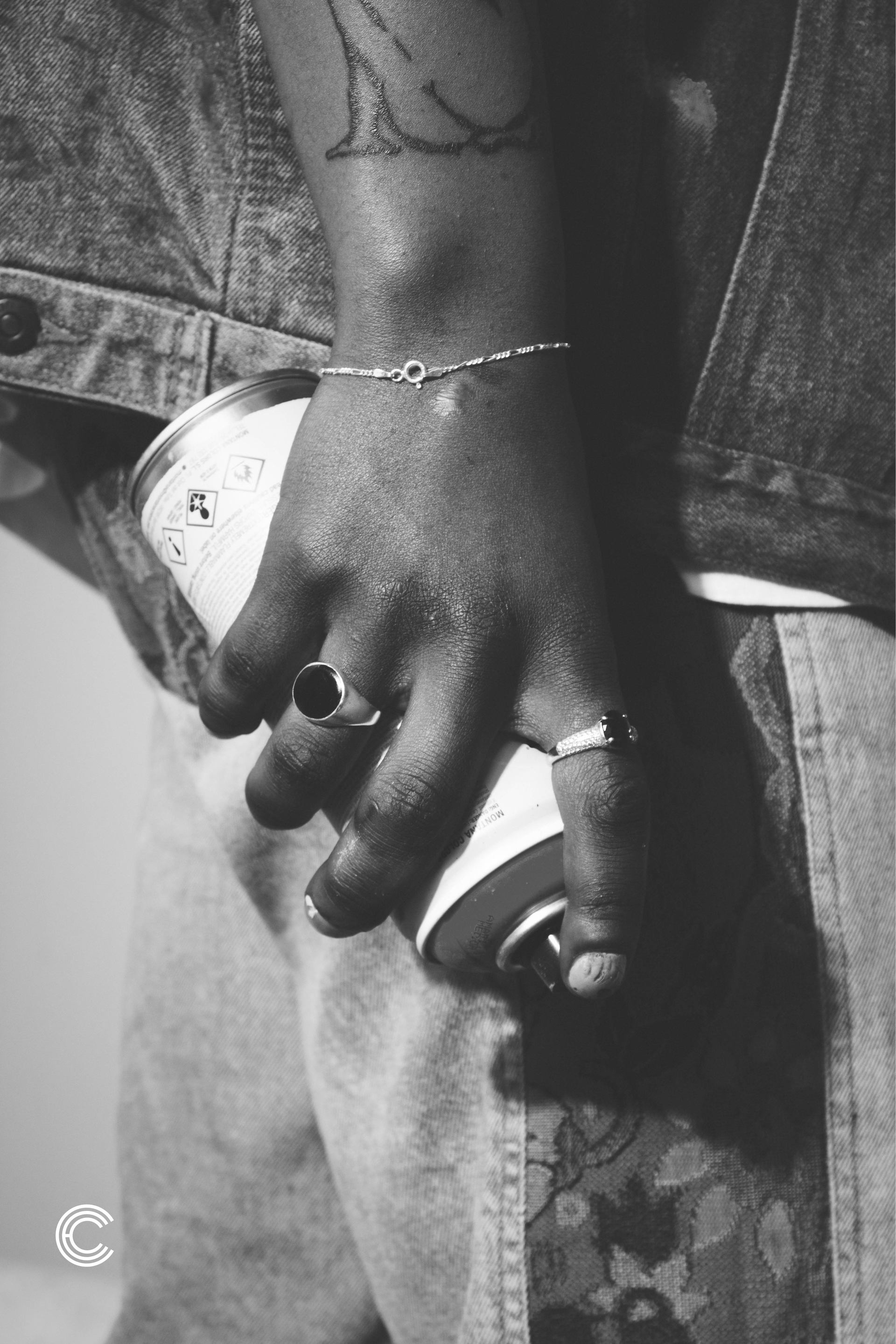

I am reminded of the very rare occasions in which language development has arisen purely from an artistic standpoint – perhaps only as far as I can tell in recent history – is J.R.R Tolkien’s forming of Elvish which later would lead to the Lord of The Rings universe. Ontologically, and in direct reference to the development of culture, our ability to command communication in diverse intricacies are demarcations of our pursuit of novelty and meaning in everything we attempt as a species. Farai extending his own cosmology around his life through an alphabet is astounding, especially since the language is a protective armour for his own autonomy; in which he remains the guardian of how deeply viewers can connect with his work. This is incredibly interesting, as it begs the question around how much privacy we afford public figures, particularly creators, when the very nature of their path is to be in direct association with the perspectives of others. In one way, Farai offers us his work as medicine – and in another way, he offers it to himself in just the same way. There are certain things only he knows and should know; yet much of his creativity is still lovingly shared with a greater, global community.
“I have carried this style with me until now, and I especially draw on it when I do my mural work; where the symbols can be scaled beautifully into bigger and bolder sizes.” Farai points out in reference to the language.
Another aspect of Farai’s style is amplified by the characters and figures; a manifestation that he relates to as “psychological portraiture”, in which mental health is the central focus and interrogation underpinning his most recent works.
“I came to a point in my awareness of my mental health in which it became crucial to look into body language and how we are attempting to express how to feel especially in the context of the pandemic. It has been a global, collective trauma – alongside all the ecological, socio-economic disasters that continue – and so a lot of my recent works reflect my mind in a figurative way; the many shades and moods I have witnessed and interpreted in myself and others, and how that has come to be this thematic conversation. I focused a lot on the psyche and mind-scape, and so I think a lot of this work is imbued with a mindfulness around mental health, especially in relation to how tangible the experience of the mind really is and the power it holds over our realities. Also, the versions of ourselves that we lock away or hide from others; even those closest to us, and how it becomes so confronting in an experience like lock-down in which we are forced to be around people in strict setting.”
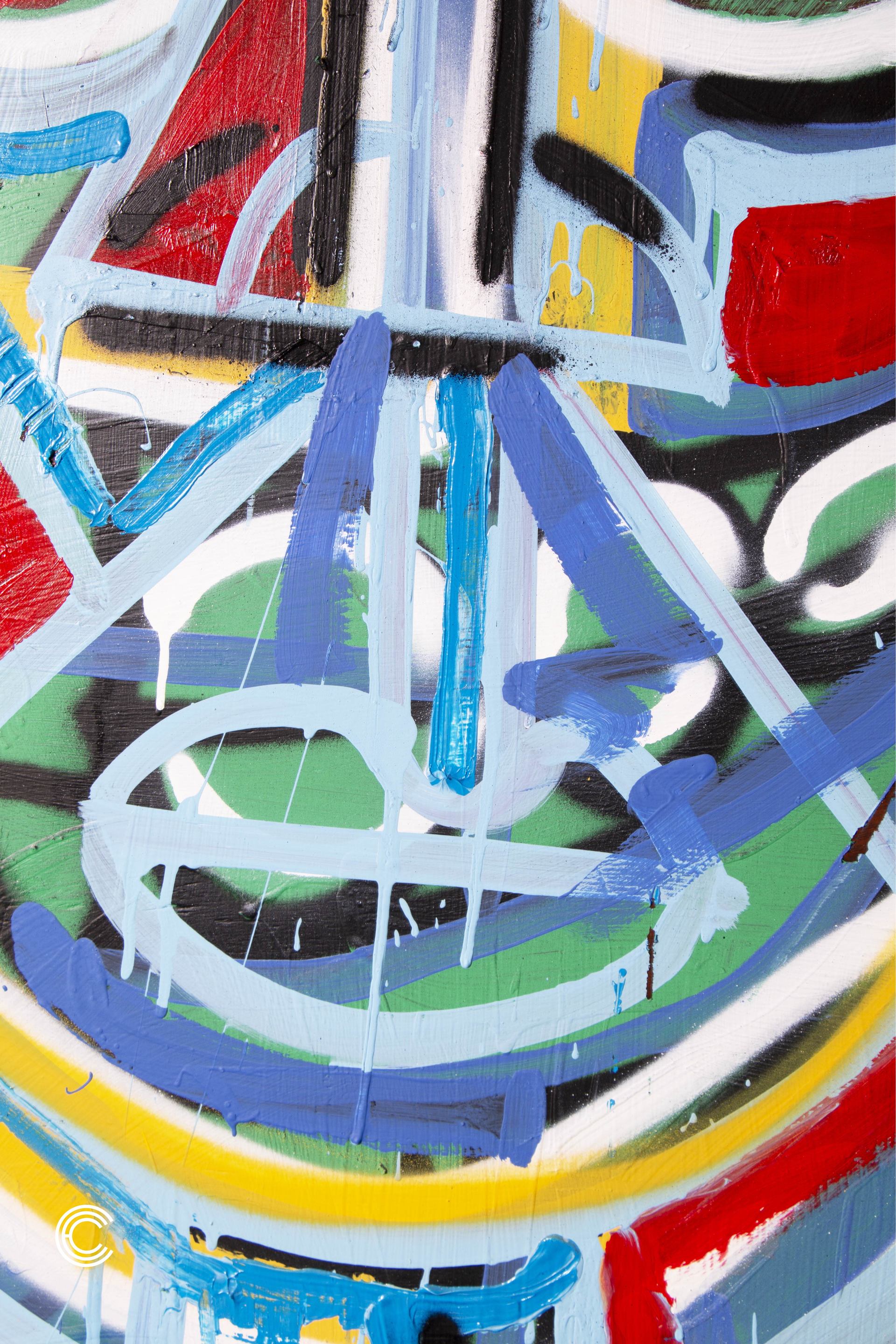

I ask Farai what he is working on at the moment – and as I expected, it is a multitude of things perfectly aligned to his multi-disciplinary nature.
“I am working with a lot of NGOs and projects to raise funds for mental health. I donated a work to the Desmond Tutu Foundation, and I am using my platform and position to create awareness through my experience. I am also moving further into teaching and educating, but in a completely different way to the traditional art school experience; more like workshops, and in decentralized environments. This is part of me reconciling my art school experience; in which the skills I was able to learn should not be gate-kept for the price of four years’ tuition fee, especially in South Africa. So, I really want to bring more opportunities in the way I can, and use what I know in an environment that is laid-back, while also being useful to growing someone’s talent.”
Farai’s thoughtfulness is palpable – and in an age where many are set on being influencers – it is conversations like this which determine to me the difference between being an influencer and being influential; the latter being a far more impactful, original result of someone’s genuine contribution to the world. Farai does not simply demonstrate being influential; he embodies it. This is a being who is born with exceptional vision, and puts in the work and energy to implement that vision as an ongoing reality.
Ending our conversation, I ask whether there is a comic book on the cards – to which Farai counters, saying it is more likely to be an animation. FKA Twigs’ line in “home with you” off her Mary Magdalene album comes to mind; // never seen a hero like me in sci-fi //.
I have never seen a hero like Farai, because his character arch is still very much underway. I mention one of the highlights of 2020 for me in terms of animation, Duncan Trussel’s vividly portrayed Midnight Gospel, in which animation is the medium through which he explores externalism and spirituality with a host of guest appearances. Farai gasps; “I literally found his podcast last night, that’s so crazy!” – as we go on to geek out about the brilliance of the show and its beckoning inquiries into the nature of life and death.
A sublime ending to this conversation; as I imagine Farai being at the helm of his own animated series, perhaps the first African animation Netflix would be so honoured to finance.
Who knows? Everything is possible in this unlimited, magical multi-verse.
WRITTEN BY: HOLLY BELL BEATON
PHOTOGRAPHY BY: KOOOOOOS
